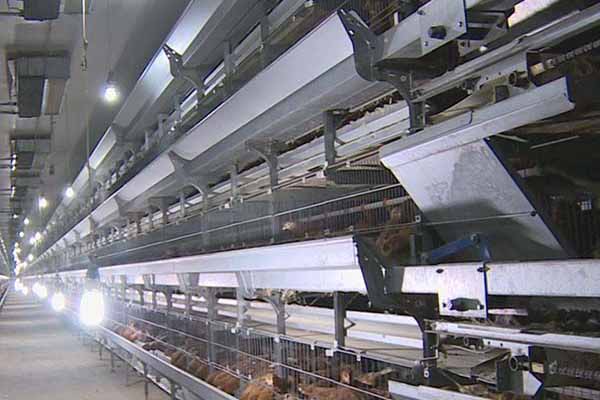High Capacity Chicken Cages for 10000 Birds: Design, Specifications, and Optimization
Time : 2025-06-28
The modern poultry industry relies heavily on the efficiency of housing solutions for its rapid expansion. With an increasing demand for high-quality poultry products, the need for high-capacity chicken cages has become imperative. In this article, we will explore the design, specifications, and optimization of high-capacity chicken cages specifically designed to accommodate 10,000 birds. By understanding these aspects, producers can ensure the well-being of their chickens and optimize their poultry farming operations.
Understanding High-Capacity Chicken Cages
High-capacity chicken cages are designed to accommodate a large number of birds while maintaining the required conditions for their growth, health, and productivity. These cages typically feature a high-density layout and incorporate various technologies to optimize the environment inside the housing.
Design Factors for High-Capacity Chicken Cages
The design of high-capacity chicken cages must consider several key factors to ensure the overall success of the poultry operation:
1. Space Allocation: Each chicken should have sufficient space for movement and access to feed, water, and bedding. Typically, 0.8 square meters per bird is recommended, which equates to approximately 8 square meters for a 10,000-bird flock.
2. Airflow and Ventilation: Adequate ventilation is crucial for maintaining a healthy environment. The cages should have adjustable vents or fans to regulate airflow and temperature, ensuring the birds stay cool during hot weather and warm during colder months.
3. Water and Feed Access: Easy access to clean water and quality feed is essential for the birds’ well-being. The design should include automatic feeding and watering systems to reduce manual labor and maintain consistency.
4. Manure Removal: Efficient manure removal is vital to prevent disease outbreaks and maintain a clean environment. Cages should have sloping floors and manure conveyors to ensure timely and effective manure management.
5. Health and Welfare: The design should accommodate regular health checks and vaccination procedures, as well as provide protection against predators and other threats.
Technical Specifications
To ensure that high-capacity chicken cages are functional and effective, several technical specifications must be considered:
1. Material: High-quality steel or galvanized metal is ideal for durability and corrosion resistance.
2. Size: Standard dimensions vary, but the height of the cages should be approximately 1.8 meters, with a depth of 0.6 meters and a width of 2.5 meters. These dimensions are suitable for housing layers or broilers.
3. Flooring: Sloping floors with anti-slip coating can enhance manure conveyance and minimize foot injuries.
4. Roof: The roof should have a slope to ensure proper drainage of water and snow, with UV-resistant materials for longevity.
5. Safety Measures: Secure locking systems, latches, and reinforced panels are necessary to protect the chickens from external threats and maintain safety.
Optimization of High-Capacity Chicken Cages
Optimizing the operation of high-capacity chicken cages for 10,000 birds requires a careful balance between technology, efficiency, and animal welfare:
1. Climate Control: Install temperature and humidity sensors to monitor the environment and adjust climate control systems accordingly.
2. Automatic Systems: Implement automated feeding and watering systems to maintain consistent food and water availability, which can improve productivity.
3. Monitoring and Management Software: Utilize advanced software to track bird growth, health, and production, allowing for timely interventions.
4. Manure Management: Implement advanced manure treatment technologies to reduce the environmental impact of poultry farming.
5. Training and Education: Regularly train staff on the best practices for poultry housing, handling, and maintenance to optimize operations.
Conclusion
High-capacity chicken cages designed for 10,000 birds are crucial for modern poultry operations. By considering the appropriate design factors, technical specifications, and optimization strategies, producers can enhance the overall performance and profitability of their operations. With careful planning and investment in advanced technologies, these housing solutions can provide a healthy and productive environment for poultry, ensuring sustainable growth in the industry.












